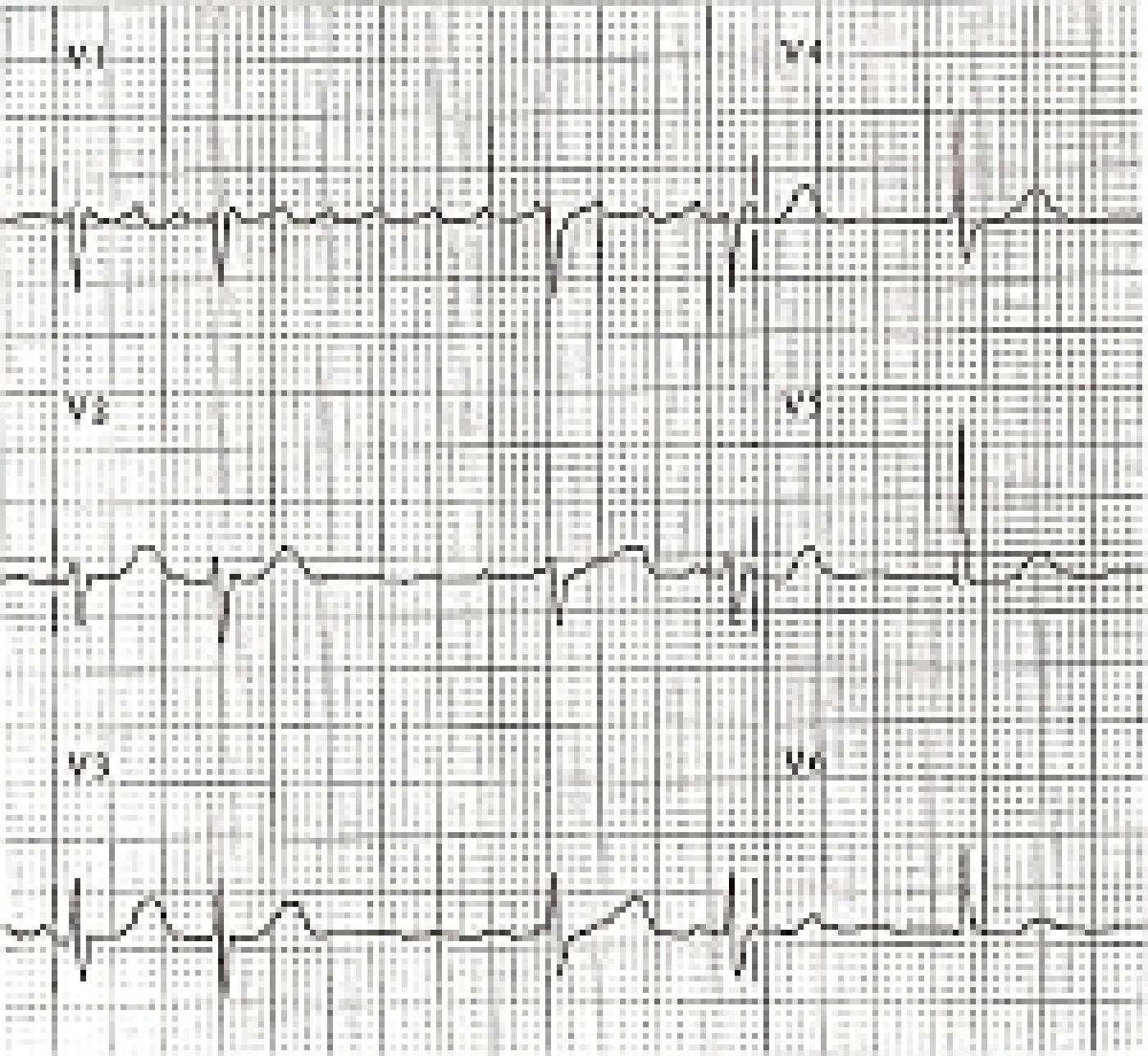When I post 12-Lead ECGs and ECG rhythm strips to this site, I try to provide helpful comments for teachers. I don't try to completely discuss all the ramifications of each ECG. A lot of these comments involve little "factoids" that are helpful for our students. Examples: on nearly all ECGs, the channels (or strips of ECG tracing) are run simultaneously. That means that, from left to right, the strip represents a timeline. But, the strips below show the same 10 seconds in time. This is VERY helpful in so many ways.
An example is, if p waves are difficult to see in one lead, you can look above or below at the same beat. If p waves are present, then - the patient has p waves!
Another helpful fact is: AV blocks come in two basic "types". Type I blocks usually occur in the AV node. Type II blocks occur below the AV node, in the Bundle of His or, more commonly, in the fascicles of the bundle branches. Type II blocks are usually much more serious and permanent. Complete heart blocks (third-degree) also come in two types. Those occurring in the AV node usually have junctional escape rhythms, with a narrow QRS and rate between 40 and 60. Type II complete blocks are much more worrisome. They occur below the AV node, and have ventricular escape rhythms - wide QRS and very slow rate! In heart failure patients, wide QRS is associated with worse LV function and higher mortality.
So, are there any facts that you pass on to your students that cause them to say, "Wow, no one ever told me that!" Or, "That really helps!". If so, pass them along here, or in the Forums. Looking forward to hearing from you.
-

- Dawn's blog
- Log in or register to post comments
All our content is FREE & COPYRIGHT FREE for non-commercial use
Please be courteous and leave any watermark or author attribution on content you reproduce.


